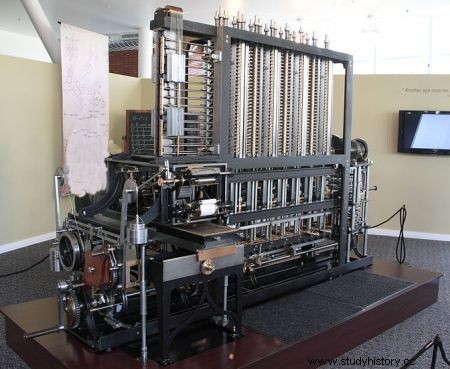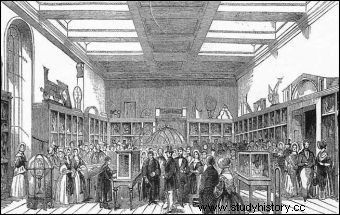The project of the first computer did not arise in the 1940s. A crazy British mathematician designed the machine, which in terms of its capabilities was comparable to computers constructed after World War II. It was close, and the IT revolution would have happened more than 100 years earlier than it really is ...
Charles Babbage (1791-1871) was a full-mouthed eccentric. The world regarded the world as a set of numbers and mathematical laws. He analyzed the profitability of postal services, cracked ciphers, took the pin-making process apart, was fascinated by tree rings, and wherever he went, he measured the breath length and heart rate of cows and pigs.

Charles Babbage himself, pictured in 1860
In 1823, this peculiar professor persuaded the British Crown government to finance his new obsession:the differential machine. It was supposed to be - in short - an apparatus answering mathematical queries that would allow the production of logarithmic arrays as cheap as potatoes.
Babbage spent twenty years planning and constructing this extraordinary machine, continually complicating the schemes and expanding the initial assumptions. As James Gleick writes in his book "Information. Bit, universe, revolution ”, after ten years:
The machine was 60 centimeters high, had six vertical axes, dozens of circles, and was capable of counting six-digit numbers. After the next ten years, plans - on paper - predicted that the device would be about 45 cubic meters, weigh 15 tons, and consist of 25,000 parts and the plan itself was drawn about 35 square meters.
Each rotation of the mechanism was to involve dozens of camera elements, which the constructor was forced to give abstract names (digital dial, index finger, thumb, trigger mechanism, hook, gripper, metal tooth, etc.). The principle of operation of the whole thing required hundreds of pages of descriptions, and still it was understandable only to experts in advanced mathematics.

A working model of Babbage's differential machine. The final plan assumed much greater momentum… (photo:Allan J. Cronin; license CC ASA 3.0).
Unfortunately, Babbage had one flaw that sabotaged the entire project. He couldn't help but make constant corrections and improvements, and the government finally… lost its patience. As a result, a ready-made differential machine was not created. Babbage had only managed to construct a partial prototype of it. It was only in the early 1990s that a group of scientists created a working replica of the device. This gigantic camera is in fact… quite a complicated calculator.
The government's receipt of the grant did not kill Babbage's enthusiasm. As befits a true genius, he quickly forgot about his differential machine. He began to devise a device with incomparably more powerful possibilities. He called it the analytical machine.

It was supposed to be a structure capable of performing complex calculations and solving mathematical problems at an express pace. Babbage was ahead of his time with plans to build both the counterpart of working memory (he called it "storage") and a processor (which he described as "the mill").
The machine was to be able to control sequences, branches and loops. For its needs, the first computer program in history was created. The designer wanted to communicate with the device using special, punched cards. This machine was to be the embodiment of mathematical laws , but not only. As James Gleick writes in his book "Information. Bit, universe, revolution ":
Babbage wrote the numbers on thousands of revolving dials, but their operation could express symbols in a more abstract dimension. The machine could process any relevant bindings. She could manipulate the language. She could make music.
Unfortunately, this time the mathematician did not manage to find a generous sponsor. The Analytical Machine was never built, though Babbage had made detailed plans for it. These 1837 documents were rediscovered at the end of the 20th century. Only in 2010, British programmer John Graham-Cumming launched a project aimed at building a Babbage analytical machine with attention to the smallest details.

Part of Babbage's differential machine on display at the opening of the King George III Museum (1843).
He is convinced that this gigantic ("larger than a locomotive") steam-powered computer, 13,000 times less computing power than the first personal computers in the 1980s, will work. It will probably be a few more years before we find out if Graham-Cumming is right. And whether Babbage really was a genius, and at the same time the originator of the first real computer.
Sources:
Basic:
- James Gleick, Information. Bit, universe, revolution , Wydawnictwo Znak, 2012.
Complementary:
- Jonathan Fildes, Campaign builds to construct Babbage Analytical Engine , "BBC News", October 14, 2010.
- Plan 28 - Babbage analytical machine design website.
Buy the book (much) cheaper than others:
